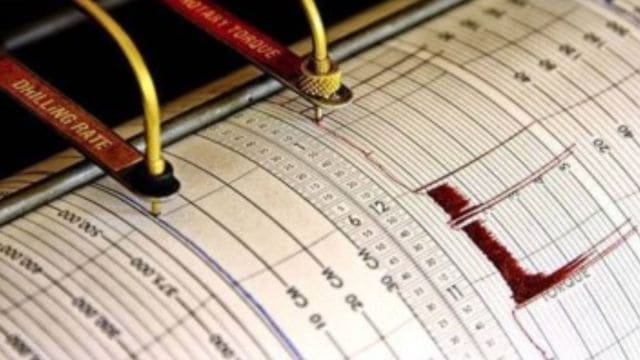
New Delhi, July 10, 2025 – A 4.4 magnitude earthquake struck near Jhajjar, Haryana, at 9:04 AM IST, sending strong tremors across Delhi and the National Capital Region (NCR), including Noida, Gurugram, Ghaziabad, and Faridabad. The quake, with its epicenter located 3–4 km northeast of Jhajjar and 51 km west of Delhi, occurred at a shallow depth of 10 km, amplifying its felt intensity. Residents reported shaking fans, swaying household items, and trembling computer systems, with some describing it as the “longest earthquake” they had experienced in years. No casualties or significant damage have been reported, but the event underscores Delhi’s vulnerability as a Seismic Zone IV region.
Details of the Earthquake
According to the National Centre for Seismology (NCS), the earthquake struck at coordinates 28.63°N, 76.68°E, with a magnitude of 4.4 on the Richter scale. The shallow depth of 10 km caused the tremors to be felt intensely across a wide area, including Haryana’s Rohtak, Dadri, Bahadurgarh, Panipat, and Hisar, as well as Meerut and Shamli in western Uttar Pradesh, approximately 200 km from the epicenter. The tremors lasted 10–15 seconds, prompting residents to evacuate homes and offices in panic. Delhi Metro services were briefly halted for 2–3 minutes as a precautionary measure but resumed normal operations shortly after.
Social media posts on X captured the public’s alarm, with users sharing videos of shaking objects and describing the quake as “scary” and “vigorous.” One resident in Jhajjar told ANI, “I was working in my office when computer systems and fans started shaking. We rushed out… I had never felt such an earthquake before.” Another in Ghaziabad reported a “sudden jolt” that “shook me out of my seat.” Netizens noted the quake felt unusually prolonged, with one claiming it was “the longest earthquake I’ve felt in a very long time.”
Delhi’s Seismic Vulnerability
Delhi and the NCR lie in Seismic Zone IV, a high-risk area for moderate to strong earthquakes, as classified by the Bureau of Indian Standards (BIS). The region’s seismicity is driven by the collision between the Indian and Eurasian tectonic plates, which causes fault lines to store and release energy. Active fault lines near Delhi include the Delhi-Haridwar Ridge, Sohna Fault, Delhi-Moradabad Fault, and Mahendragarh-Dehradun Fault. The NCS has recorded nearly 500 earthquakes within a 50 km radius of Delhi from 1993 to 2025, ranging from 1.1 to 4.6 in magnitude, with five quakes exceeding 5.5 since 1720.
This year alone, Delhi-NCR experienced a 4.0 magnitude quake on February 17, centered in Dhaula Kuan, and a 2.3 magnitude tremor in southeast Delhi on June 8. A 5.9 magnitude earthquake in Afghanistan’s Hindu Kush in April 2025 also sent tremors to Delhi. Shallow quakes like the one in Jhajjar are particularly concerning, as they can cause stronger shaking despite lower magnitudes. The Delhi Disaster Management Authority (DDMA) warns that the region’s dense urban infrastructure and proximity to fault lines heighten its vulnerability.
Response and Safety Measures
The National Disaster Response Force (NDRF) issued an advisory urging residents to remain calm, avoid elevators during evacuations, and use stairs. Drivers were advised to pull over to open spaces if tremors occur while driving. The NDRF also recommended consulting structural engineers to make homes earthquake-resistant. Delhi Police reported no damage across the city and prayed for residents’ well-being. Authorities, including the NCS, continue to monitor for aftershocks, though none have been reported as of 2:17 PM IST.
Local accounts highlighted the chaos. Neelam Sharma, a Greater Noida resident, told The Hindu, “I was making breakfast when the floor shook. My neighbors were already outside, talking about the earthquake.” In Jhajjar, an elderly man described the jolt as the strongest he had ever felt, with many residents rushing out barefoot or in nightwear.
Context and Concerns
The earthquake followed heavy rainfall in Delhi-NCR on July 9, which caused waterlogging and traffic disruptions, adding to the region’s challenges. Some residents expressed fear of a “dual natural disaster” amid the ongoing monsoon. The timing, during morning office hours and school drop-offs, heightened panic, with children and workers evacuating buildings. Posts on X reflected a mix of fear and humor, with one user joking, “Ghar me earthquake, bahar jao to ye [rain]. How will I survive?”
The incident has renewed calls for stricter building codes and seismic preparedness in Delhi-NCR. Experts warn that the region’s high-rise buildings and crowded urban areas amplify risks, especially if a stronger quake occurs. The DDMA’s classification of Delhi as Zone IV underscores the need for proactive measures, yet enforcement of earthquake-resistant construction remains inconsistent.
Critical Perspective
While the 4.4 magnitude quake caused no reported damage, its intensity and reach highlight the precariousness of Delhi-NCR’s seismic profile. The region’s history of frequent low-to-moderate quakes suggests a need for greater public awareness and infrastructure upgrades. The absence of casualties is fortunate, but reliance on reactive measures like evacuations, rather than preventive structural improvements, exposes systemic gaps. The government’s push for earthquake-resistant buildings, as advised by the NDRF, must be prioritized to mitigate future risks in this high-risk zone.
Last Updated on: Thursday, July 10, 2025 2:24 pm by Lok Ram | Published by: Lok Ram on Thursday, July 10, 2025 2:24 pm | News Categories: India, General